#ISTD
Explore tagged Tumblr posts
Text

Star 9
Pentax *ist D, Sigma 28-135mm ƒ/5.6 Macro + Kodak Duaflex II
#color#digital#duaflex2#istd#glass#kodak#pentax#reflection#sigma#square#street#theartofseeing#throughtheviewfinder#ttv#twocameras#urbanacid#window
7 notes
·
View notes
Text
All About Lily Chou-Chou - Research 1
No other film elevates a movie soundtrack to the level that Shunji Iwai’s 2001 cinematic masterpiece, All About Lily Chou-Chou does. Not only did the director help produce the soundtrack and its lyrics, he also created lore surrounding the project a year ahead of the film’s general release in 2001, crafting a detailed online chat room supposedly written by “fans” chronicling the fictional universe of “All About Lily Chou Chou”.
The soundtrack of “All About Lily Chou-Chou” is an aspect of the film that simply cannot be separated from its overarching narrative.
The narrative of the film is rather simple: we follow the story of two young boys, Yuichi Hasumi and Shusuke Hoshino, as their relationship begins, develops, and collapses over the course of several years as they progress through middle school. What connects both Yuichi and Hoshino, although unspoken to one another, is their complete dedication and admiration for Lily Chou-Chou.
Yuichi himself serves as an admin for the fan website titled “Lilyphilia,” under the name “Philia,” while Hoshino’s role in the online-based BBS plot unravels as the film progresses. Both of these boys, as well as the additional characters that surround them, are in one way or another critically impacted by Lily’s music, as well as the prevalence of the “Ether” that cocoons and encapsulates their entire being.
Each character, however, has their own unique perspective on Lily and the power her music has, and their interpretations of her sounds and lyrics lead them to blissful as well as disastrous ends. The events of this story culminate into a climax that is less satisfying than it is heartbreaking, only to slowly dissipate and end in a hopeful moment of piano-backed bliss in a sun-filled classroom.
THE ILLUSION OF REALITY
In June of 2000, on the Japanese music variety show Hey! Hey! Hey! Music Champ, a new face in the industry by the name of Lily Chou-Chou performed one of her debut singles, “共鳴 (空虚な石)” [Resonance -Hollow Stone] for the first time.
youtube
The song, just over two minutes in length, is an emotional and passionate ballad with lyrics detailing a vague but raw look into the pained heart of its singer, evoking imagery of a hollow stone forming within her heart as she contemplates her place in the universe in the face of a broken romance. Of course, this is only a single interpretation of the lyrics, but the song is nonetheless powerful to the listener, and it'd be clear to any viewer of the programs that Lily is a promising young artist to keep an eye on at the start of the new millennium.
New and eager fans began to search the internet for a space to relay their thoughts, feelings, and reactions to Lily’s music, only to come across a fan website already created, by the name of Lilyphilia. The website features a Bulletin Board System [BBS], in which fans can freely post whatever they want for others to see, with only a single rule being designated by the site’s admin, Philia, in order to participate: that you have to “love Lily.” However, as fans begin to flock to Lilyphilia and make posts themselves, there seems to be a conversation between two users, Philia and Blue Cat, that spans for months prior to Lily’s TV debut. Philia and Blue Cat have sporadic but extensive exchanges regarding their strong feelings for Lily, their intimate connection to the “Ether,” and how the troubles of their everyday lives are piling up at a rapid rate.
It is clear to the site’s newcomers that these two users were going through a truly devastating part of their lives behind the screen, although the details of which are left ambiguous and cryptic. At some point, around the end of 1999, the messages from Blue Cat and Filia abruptly stopped, and a new admin named “Pascal” took over the website, reviving it as Lilyholic for all present and future users.
At this time, under the site’s “Media” page, two newspaper articles from the Teito Shimbun were posted that detail a horrific accident that took place following a Lily Chou-Chou concert on December 8th, 1999. The first article relays that a crowd of Lily fans outside the Shibuya-based venue collapsed, during which 10 people were injured and one, a 15 year-old by the name of Shusuke Hoshino, was seemingly crushed to death under the other fans. The second expands on this incident, detailing that an autopsy report on Hoshino revealed that he actually died from a stab wound, and the suspected murderer had not yet been identified. The article also references the history of death associated with Lily’s name, as another fan of hers commited suicide earlier that year.
Following Filia and Blue Cat’s disappearance from the BBS, Pascal posts a front page note to all users of the Lilyholic website detailing his new position as admin and that he intends to “revive” the fan site in line with its former glory. Pascal also makes a stark announcement that will forever change the reality of the site’s users: that his real name is Shunji Iwai, and he is making a film about Lily and the events that led up to the deadly incident outside her concert hall in 1999, which is to be titled “All About Lily Chou-Chou.”
THE MIND BEHIND THE FILM
This reality-bending prologue to “All About Lily Chou-Chou” only manages to be the tip of the iceberg in regards to the film’s multi-textual nature. In reality, the Lilyphilia/Lilyholic sites that fans managed to find on the early-internet sphere following Lily’s musical “debut” were almost entirely manufactured by Shunji Iwai himself. Iwai created the sites as well as the characters of Philia, Blue Cat, and Pascal all on his own in order to create an “online novel” that would serve as the basis for his upcoming cinematic venture. The film itself serves as an extension of the BBS conversations featured on the website as well as the artificial newspaper postings.
The users, such as Philia and Blue Cat, are actually matched with characters in Iwai’s film, and their interweaving plots conjoin around the identity of Lily Chou-Chou, who is revealed to be an entirely fictionalized musician. However, this is where the threads of Iwai’s master plot begin to settle into place, as while Lily herself is simply a name associated with a collection of songs used as the soundtrack to Iwai’s project, her presence and music are used in a way that no other film has managed to quite achieve. In essence, the ways in which Lily Chou-Chou is presented and received, both in the real world and the universe of the film, manages to transform the soundtrack - a tool usually used to fill in the space of a film’s events or enhance emotional beats - into a character entirely of its own making, and dons the viewer with a sense of participation in a story that is out of their control, making the lasting effects of the film all the more intense, heart-crushing, and contemplative.
WHO IS LILY?
Truthfully, Lily Chou-Chou is a musical project created by Iwai, producer Takeshi Kobayashi, and singer Ayako Mori, who would go on to have a successful career under the stage name Salyu a few years after the film debuted. Lily would not only be used as a pivotal character in the plot of the film, in line with its title, but the songs created under her name would be used as the film’s soundtrack, blurring the lines between Lily’s reality and unreality. On its surface, the film itself is a simple albeit gruesome look into the lives of several young children living in the Japanese countryside in the latter years of Japan’s “Lost Decade.” As the 1980s, one of the country’s most prosperous and luxurious eras in its contemporary history, came to a close, the 1990s became a time of economic and emotional decadence after the recession of 1991.
With news-spanning headlines detailing a massive increase in youth violence and suicide during this decade, young people living in the country saw themselves on a road to nowhere, standing at a crossroads of misdirection and loneliness, not far from what Yuichi describes as the “age of grey” within the film. To make things worse, complicit or even abusive adults catalyze the unhealthy behaviors of the children we see, representative of the lack of societal assistance or guidance during this complex and isolating time in Japan. However, when these systems fail and young people stand at a crossroads of confusion and apathy, All About Lily Chou-Chou’s answer to help guide those in need is quite simple: music.
Within the film, the titular musician, Lily Chou-Chou, is seen by her fans as a god among mortals, a mystical and magical provider of calm, belonging, and purpose at a time when such feelings are seemingly out of reach in the real world. Through her music, Lily is able to access and share the “Ether,” an omni-present yet invisible force that surrounds and comforts those who choose to listen and dedicate themselves to her music, with Yuichi and our cast of characters themselves acting as dedicated followers of Lily’s word and sound. The film, however, takes this form of idolatry to its extremes, as characters interpret Lily’s lyrics in ways that are both completely comforting as well as downright tyrannical. This film displays the spectrum and extremes of fandom, and how the words of an artist that so many people love and adore can be twisted and morphed to inspire violence and betrayal. This concept is even touched upon in the movie itself, with several characters referencing the hidden duty of all supposed Lily fans: “don’t spoil the Ether.”
Outside of Lily’s real-life “artificiality,” she has an in-universe backstory that plays an important role in both the sound of her music as well as how fans become connected to her through her lore, affirming or twisting the idealist images they have of the musician. Within the film, Lily used to be the lead vocalist for another band, “Philia,” which broke up in 1997 just a couple years after their debut. Another member, Katuro Kayama, went on to lead a major-label band under the name “Yellow Fellows,” for which Lily wrote lyrics. Following the start of Lily’s solo career, rumors and gossip spread throughout her fanbase that tainted her image, as non-fans accused her of ghostwriting those songs as well as having been boosted by Katsuro’s newfound success. At the scene of the concert in the last leg of the film, a fan waiting in line reaffirms this rumor, and as a result several fans around him begin to beat him up in defense of Lily and the “Ether” - a realistic representation of a devoted fan base lashing out at those who stain their idol’s name.
The existence of an in-universe backstory on top of Lily’s real-world origins adds to the illusion of her existence, and yet emphasizes our own participation in the events we witness on screen. When it comes to any musician or idol, fans desire to know about their history, story, and personality through their own experiences in order for that idol to become more relatable and “down to earth.” While this may not always be the case, dedicated fans will look into the lives of their idols as a way of humanizing their status and create a connection that lets them become closer to the art being created, as well as the idol themselves. In a modern context, we know this all too well as parasocial relationships, wherein fans dedicate their time and interest to Lily and her music, while Lily herself is simply a person who happens to create art that appeals to a great number of people without knowing them personally. Within this exchange, Lily’s humanity becomes reduced as fans begin to form and distort their own perceptions based on her music, history, and controversy. Even in 2001, Lily Chou-Chou stands as a golden example of a contemporary concept in the age of online interaction and connection that forces idols, musicians or otherwise, to have their own sense of reality or authenticity stripped by their own fame and public perception. In this sense, the question of Lily’s “authenticity” as either a real-world artist or artificial idol begins to lose its footing, as fans themselves are able to validate or dismantle her humanity on their own; Lily, like many in the music industry, stands as a figure entirely formed from the hands and minds of her fans.
7 notes
·
View notes
Text
youtube
PRESS HERE- by Herve Tullet
I wanted to have a look at some forms of interactive books and I found this incredible example by Herve Tullet. it has instructions to 'press' parts of the book which then has an effect on the next page.
its simply illustrated and clear, utilises primary colours and the instructions are brief.
it shows children how their movements and actions have effects and consequences, its lighthearted and fun.
4 notes
·
View notes
Text
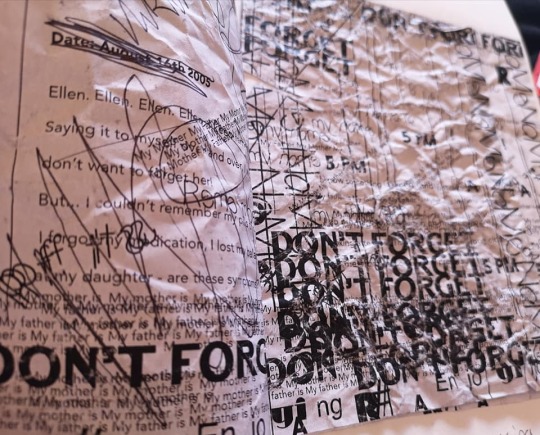



ISTD/DNDA award nomination piece.
The theme was 'Lost'
My idea was to follow the theme in a way of illness - Dementia. The way we lose ourselves as a person and watch we love lose themselves also.
This project was near and dear to me, having my grandad face dementia, therefore I recorded everything I saw and witness as well as put in some research of the disease by myself.
My Grandads diary
It begins legible and able to read, showing his mental stability and eagerness to write about his life and loved ones. As the pages turn it slowly develops into a mess of words - illegibility and being unable to understand what is being spoken about, even from his perspective and those reading. I wanted to communicate the inner turmoil that goes through the mind when 'losing' to this illness.
Even the page itself begins to tear and crinkle as the time goes on.
0 notes
Text
Specialist practise - Joybringer evaluation
Overall, I am really happy with my final outcome. I took into consideration all of the research I collated to make informed designs to convey the message of different ways people with ADHD chase dopamine.
I used a variety of typefaces, I did this to convey that with ADHD everything varies so widely. For example, no brain is the same and no day is the same, so I felt having a variety of typefaces emphasised this.
I also used very busy designs and illustrations filling each page. I did this to mirror the ‘chaos’ felt in the ADHD brain. For example, the sensory overload of hearing all the noises around them, as well as the hyperactivity side.
I feel the use of the risograph style designs was very successful in my final outcome, it added a lot of texture and dimension to my designs and made them more visually interesting.
However, if I were to develop this project further, I would want to incorporate more things tailored specifically to ADHD. Although all my designs were influenced by the research I had done, I feel that neuro-typical people also receive their dopamine in these ways and I have differentiated the difference in the extent people with ADHD do these things for dopamine. For example the caffeine design I have written caffeine 21 times to show how many coffee’s I drink in the week of my diary, which was significantly more than the average neuro-typical person, so I would want to add more of that.
However, overall I think the outcome conveys my desired message and is an accessible way for people with ADHD to be reminded it is normal for them to chase dopamine due to the natural lack of it in their brains.
0 notes
Text
ISTD - Bibliography
Tuesday 12th December 2023 - Bibliography
Bacon, H. (2019). Feminist Theology and Contemporary Dieting Culture: Sin, Salvation and Women’s Weight Loss Narratives. Bloomsbury Publishing.
Bare Conductive (2018). Kateryna Shevchenko - A Typography Projection Mapping Installation [online]. Available from: https://www.bareconductive.com/blogs/community/typography-projection-mapping-installation [Accessed 17 October 2023].
BBC News (2020). Virgin Media data breach affects 900,000 people. BBC News. 5th March [online]. Available from: https://www.bbc.com/news/business-51760510 [Accessed 17 October 2023].
BBC News (2022). Partygate: A timeline of the lockdown parties. BBC News. 11th January [online]. Available from: https://www.bbc.com/news/uk-politics-59952395 [Accessed 10 November 2023].
BBC News (2023a). Fraud warning as student loses £200,000 in fake policemen scam. BBC News. 3rd October [online]. Available from: https://www.bbc.com/news/uk-northern-ireland-66992585 [Accessed 17 October 2023].
BBC News (2023b). Groombridge man scammed by fake O2 caller warns of fraud. BBC News. 3rd October [online]. Available from: https://www.bbc.com/news/uk-england-sussex-66983215 [Accessed 17 October 2023].
BBC News (2023c). Derbyshire MP Robert Largan accused of ‘fake’ newspaper con. BBC News. 8th September [online]. Available from: https://www.bbc.com/news/uk-england-derbyshire-66742672 [Accessed 17 October 2023].
BBC News (2023d). False posts about French riots spread online. BBC News. 2nd July [online]. Available from: https://www.bbc.com/news/world-europe-66081671 [Accessed 17 October 2023].
Benavides, T.B.T., Castro, A.T.A., Marichalar, S.A.G., Cisneros, M.P. and Suárez, E.C.B. (2023). Social Media Addiction in Generation Z Consumers: Implications for Business and Marketing. Springer Nature.
Brewer, J. (2021). The Climate Crisis Font shrinks in response to Arctic sea ice data [online]. Available from: https://www.itsnicethat.com/news/climate-crisis-font-daniel-coull-eino-korkala-helsingin-sanomat-tbwa-helsinki-graphic-design-220221 [Accessed 13 October 2023].
Fiori, R., Barbatti, A. and Cannone, A. (2022). Behance [online]. Available from: https://www.behance.net/gallery/143156991/Invisible-Enemy-Meet-your-inner-self [Accessed 24 October 2023].
Gorny, Liz (2022). “What do they have on me?”: explore the scary limits of data collection in design with Data Aeternum [online]. Available from: https://www.itsnicethat.com/articles/shivam-sinha-data-aeternum-graphic-design-030822 [Accessed 12 October 2023].
Gorny, Liv (2022). Superposition reveals the disturbing reach of facial recognition tech in NYC with this interactive data visualisation project [online]. Available from: https://www.itsnicethat.com/news/superposition-inside-the-nypds-surveillance-machine-digital-230222 [Accessed 13 October 2023].
Gorny, L. (2023). Huge entertainment ‘city’ in Tokyo transformed with variable typographic identity [online]. Available from: https://www.itsnicethat.com/news/and-form-tokyo-dome-city-graphic-design-171023 [Accessed 18 October 2023].
Keener, G. (2022). OPINION: Generation Z has the best and worst body image issues of any other generation [online]. Available from: https://www.idsnews.com/article/2022/10/generation-z-has-the-best-and-worst-body-image [Accessed 15 November 2023].
Larson, H. and Good, L. (2022). Gen Z battles negative body image amid unrealistic beauty standards. The Chimes[online]. Available from: https://chimesnewspaper.com/52142/showcase/gen-z-battles-negative-body-image-amid-unrealistic-beauty-standards/ [Accessed 15 November 2023].
Manavis, S. (2023). Body shaming and dangerous diet culture is back - and it’s being fuelled by social media [online]. Available from: https://inews.co.uk/inews-lifestyle/eating-disorders-are-being-fuelled-by-tiktok-as-weight-loss-content-of-the-past-resurfaces-2097055 [Accessed 14 November 2023].
May, T. (2022). German photo artist Claus Stolz mixes real and fake to pose the question what is real? [online]. Available from: https://www.creativeboom.com/inspiration/chamber-play/ [Accessed 18 October 2023].
Milla (2021). The Rise of Eating Disorders in Gen Z. OUT OF SORTS [online]. Available from: https://medium.com/out-of-sorts/the-rise-of-eating-disorders-in-gen-z-91fbe1acb74a [Accessed 15 November 2023].
Morris, A.M. and Katzman, D.K. (2003). The impact of the media on eating disorders in children and adolescents. Paediatrics & Child Health. Vol. 8 No. 5. pp. 287–289 [online]. Available from: https://www.ncbi.nlm.nih.gov/pmc/articles/PMC2792687/ [Accessed 15 November 2023].
Move Shapes (dir.) (2022). After Effects Tutorial - Smooth Typo Transition from Bold Text to Thin Text [Film].
Myerscough, M. (n.d.). London artist whose work is characterised by boldness, strong use colour and high levels of positive energy - Morag Myerscough [online]. Available from: https://www.moragmyerscough.com/index.php [Accessed 12 October 2023].
Petter, O. (2021). Young people ‘at greater risk of falling for scams than pensioners’ [online]. Available from: https://www.independent.co.uk/life-style/scams-pensioners-young-people-risk-b1896839.html [Accessed 17 October 2023].
Pixelz (2019). Photoshop, Models, and the Law: How Far is Too Far? [online]. Available from: https://www.pixelz.com/blog/photoshop-models-laws/ [Accessed 14 November 2023].
Priory (n.d.). Eating Disorder Statistics [online]. Available from: http://www.priorygroup.com/eating-disorders/eating-disorder-statistics [Accessed 19 November 2023].
Richmond, S. (2021). UK adults so suspicious of scams they are now ignoring genuine emails [online]. Available from: https://www.independent.co.uk/news/uk/home-news/uk-adults-scams-suspicious-emails-b1940997.html [Accessed 17 October 2023].
Rosmiati, R., Supriadi, D. and Jannah, R.R. (2023). Relationship of Social Media to Beauty Insecurity in Generation Z Women. Asy-Syifa : Journal of Science and Technology Nursing. Vol. 1 No. 1. pp. 17–27 [online]. https://doi.org/10.52221/asyjstn.v1i1.192 [Accessed 19 November 2023].
Salam, E. (2023). Social media particularly damaging to mental health of Gen Zers, says study. The Guardian. 28th April [online]. Available from: https://www.theguardian.com/media/2023/apr/28/social-media-mental-health-gen-z [Accessed 15 November 2023].
Sardarizadeh, S. (2023). Twitter Blue accounts fuel Ukraine War misinformation. BBC News. 8th July [online]. Available from: https://www.bbc.com/news/world-europe-66113460 [Accessed 17 October 2023].
Silva, M. and Ahmed, M. (2023). The climate change-denying TikTok post that won’t go away. BBC News. 30th June [online]. Available from: https://www.bbc.com/news/technology-66023797 [Accessed 17 October 2023].
Sonnet, S. (2022). 2022 UX Design in Museums: How Are “Innovative” Exhibits Driving Attendance? [online]. Available from: https://amt-lab.org/blog/2022/10/2022-ux-designs-in-museums-how-are-innovative-exhibits-driving-attendance [Accessed 24 October 2023].
Wonder Newsroom (2022). How much Information do we Learn Everyday? [online]. Available from: https://www.blog.askwonder.com/blog/information-data-media-consumed-in-day-average [Accessed 26 November 2023].
0 notes
Text
ISTD - EVAL
LO1 - In terms of research I think this really helped informed my decisions and was the most consistent and helped developed my outcomes better than in any other project.
LO2 - My own understanding and establishment of my target audience helped inform my decisions. I was really happy with all the experiments I did and how I created lots of original content that helped me develop later on. Having enough experiments allowed me to build onto my work to create a narrative for the audience to watch.
LO3 - My communications through presentations has became much clearer through this term being able to show my ideas consisely even when I', struggling has helped me gain feedback and show my thought process to get the right advice. The structure of my process book and my final product come to a clear conclusion. My prototypes show clear development and LO4 feedback. I explored lots of different size options to get a feel of what would be right for this project too I'm really happy with the amount of tests I printed to see clear mistakes throughout.
If I were to do my project again I would make sure that the brief I choose as the start gives me the best chance of showing my specialist practise rather than trying to research and create something so abstract that it becomes overwhelming.
0 notes
Text
sp – term reflection.
I'm proud of what I've achieved this term, with firstly getting it done because I felt I was pretty behind a couple weeks ago, but I managed to pull through and create something I'm happy with. Secondly, the outcome is really rewarding with an editorial piece as you get to finally flick through it physically, rather than digitally. Actually having it in your hands makes it feel worth it. Which is why I love doing editorials so much, I definitely think this is my specialist practice, and I hope I get to work on in my career.
Choosing ISTD wasn't a hard decision as I knew I immediately wanted to jump back into an editorial, but picking the brief was quite difficult as they all had so much creative freedom that I felt a little taunting at first. I chose The Line because at the time it was the one I was most confident to pick and there was so many paths I could've gone down. I didn't struggle too much with my initial idea, because I wanted to keep an open mind in the beginning. So looking into multiple ideas and then choose once I'd explored a little more than just a mind map confirmed that only one of the three ideas I was drawn to. Doing this was definitely a good idea as I remember last year I tried to define my idea too quickly without thinking of the important things that go into it.
My idea went through quite a few changes, from attachment, to family heirlooms, to family lineage. My original idea of my interpretation of the red string of fate can still be found within my underlying meaning for my outcome as I related the theory to more than just a romantic relationship, a family relationship/lineage. And, of course, family lineage or a timeline is visualised as a line, so I knew it still worked with the brief too.
I'd say what I struggled the most with was my narrative, I went through a lot of ideas for my narrative that I never felt worked so I never ended up taking it anywhere. So for my initial design it was a rough photo book because the only thing I knew I had was the timeline from my great great grandma to me. Having that last tutorial really helped me, and made me realise that my exploration of my lineage needs to be the narrative.
So the book starts with my discovery of my great great grandmas writings she had in the 1920s that she would recite to women's groups. This then lead me to want to learn more about her, then leading me to find out about the lace factory that her husband was running because he was from a lace manufacturing family. Then what pieced it together was the fact some of the lace that's been passed down has appeared in the wedding dresses of my great grandma, my grandma and my mum. Creating 'The Lace That Threads Us Together' as my title.
What I would do differently is instead of putting the writings in the main book, I would create a separate smaller book for inside the main book to create the idea that it's a notebook like my great great grandma's. This would've then added more dimension to the piece and it would've been a fun way to bring some colour into it. I'd have placed it between where I introduce the writings in the main book. Then just the timeline of my female lineage would've been in the main book. I think next term, before possibly submitting to ISTD, I may actually do this, so I'd re-print and bind the whole thing to have this instead.
Finally, I'm still super glad with how it came out, it became something so fulfilling since it was personal to me and will be a special thing to my mum and grandma. Overall, this term was a challenge, as it almost always is, but I finished with an outcome I’m extremely proud of which makes up for a lot of the struggles I dealt with this term.
0 notes
Text

Leaf.
Pentax *ist D + Sigma 28-135mm ƒ/5.6 Macro
#blackandwhite#bnw#botanical#bw#contrast#digital#experimentation#istd#grain#leaf#monochrome#nature#nik#pentax#photography#sigma#theartofseeing
3 notes
·
View notes
Text
Finished Outcome
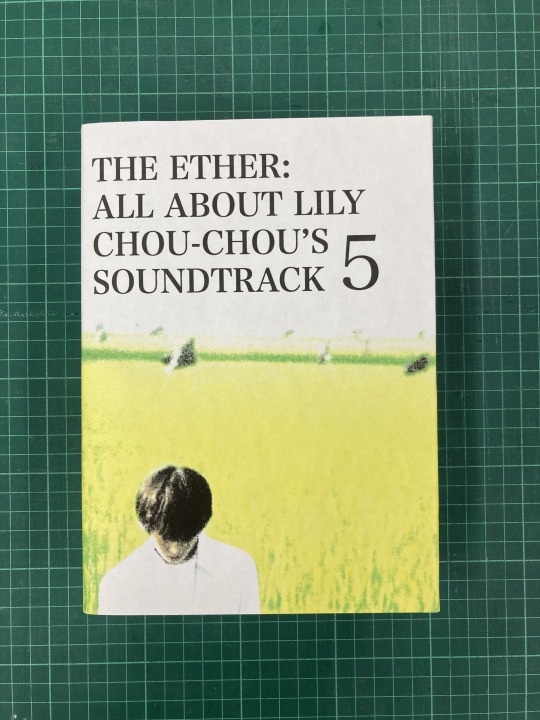

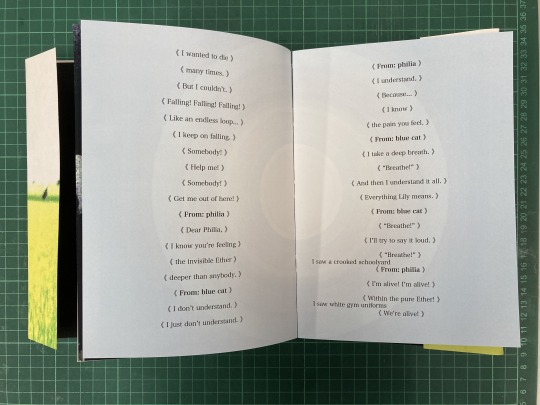
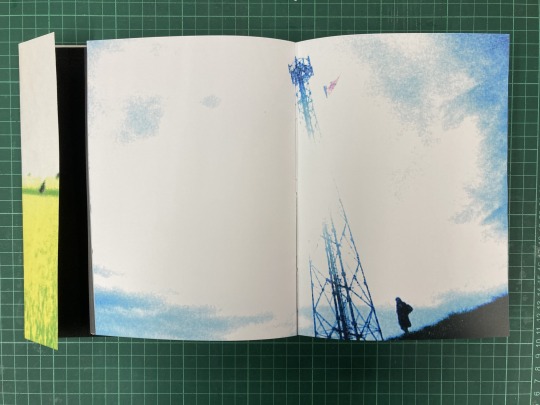
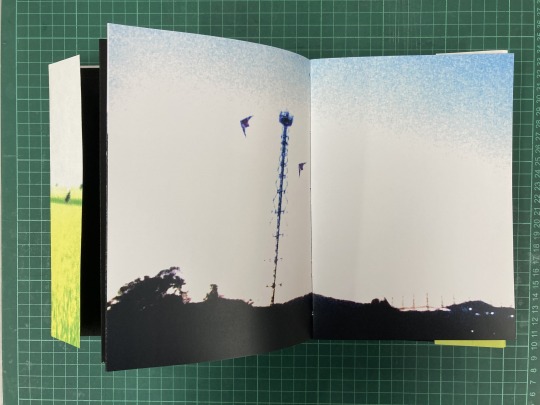
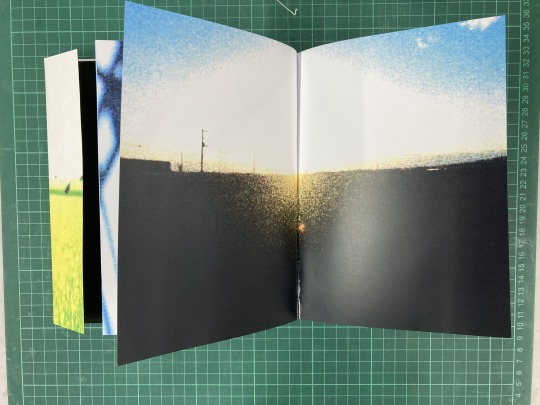
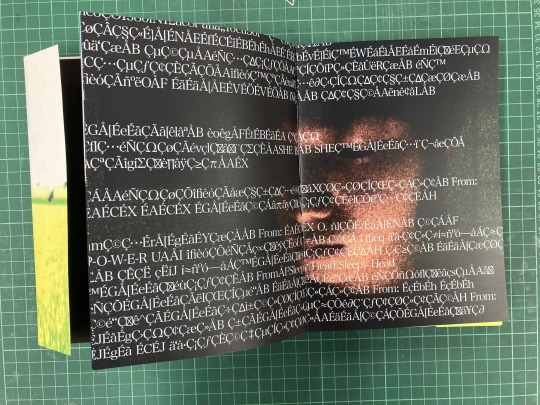

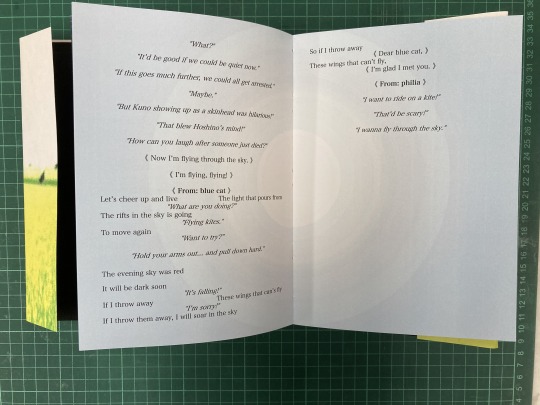
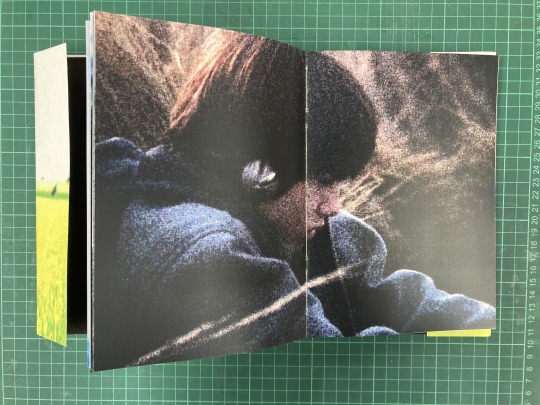
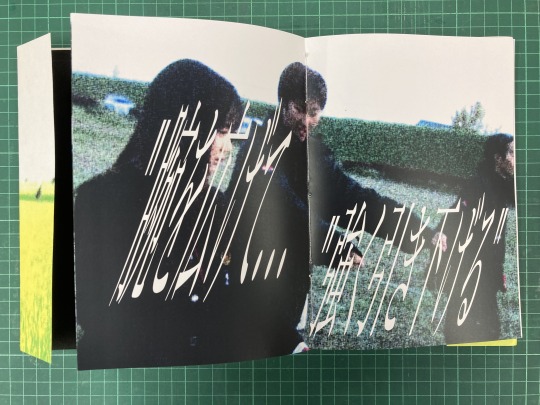
3 notes
·
View notes
Text
piece of writing a did a month ago
Wonder and amazement at all the things women do.
the tasks we juggle, the children we carry, the hands we hold.
quietly getting on with it all, almost invisibly.
almost
we have been holding onto so many beautiful things for so long our hands are cramping.
Holding life, house keys, hands and hoards of love.
We hold the world on our shoulders, between our fingertips until they start to break.
We require acknowledgment for this burden
I do not need a handbag,
I will not carry anymore
I will not buy anything else
I want pockets,
like the ones men have.
Not shallow, or sewn up or too small.
Deep meaningful pockets to hold everything I love close to me, on my person.
Women worked for years to own possessions, now we radically, want to hold them.
I wish to wear my possessions like armour.
I wish to be lined with trinkets, tickets, tampons and whatever else.
Power to the people and power to pockets.
0 notes
Text


ISTD - Prototype posters
Our ISTD project was based on a specific word - I chose the word - LOST.
This then let me develop an idea to create something personal to me and that was the idea of: Dementia
These were general ideas of being - forgotten and lost within your own mind. My research lead me to understand that is what presumably happens when someone is going through such a horrible disease. So I wanted to try and reflect that within a poster.
0 notes
Text
final outcome
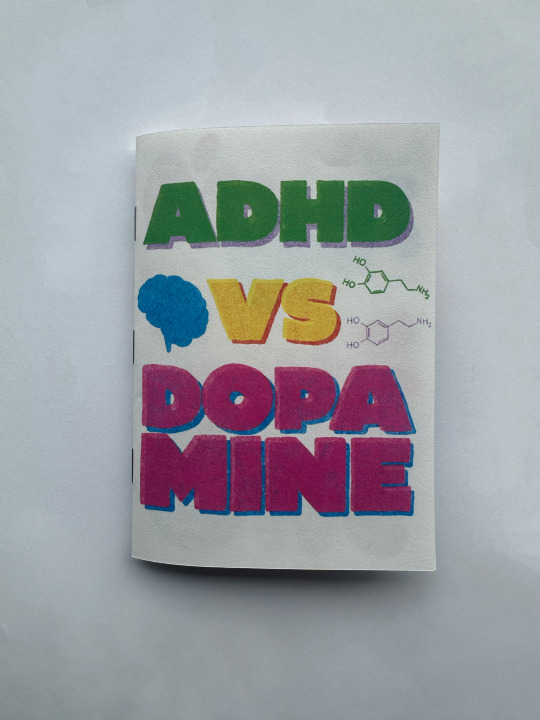
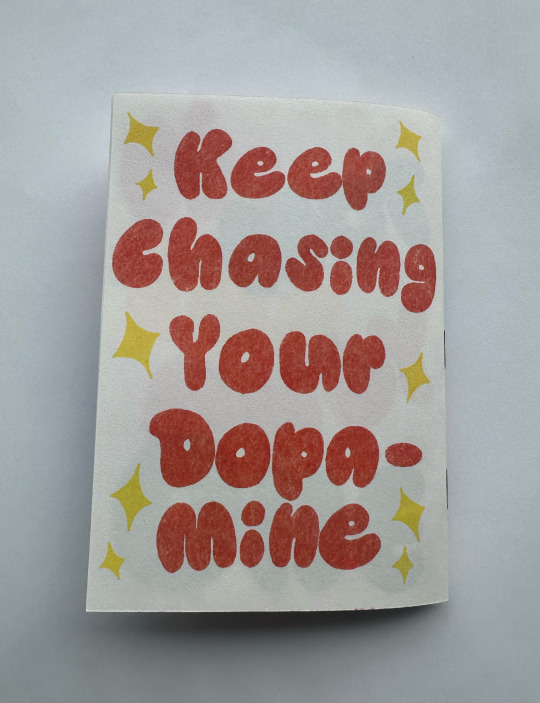

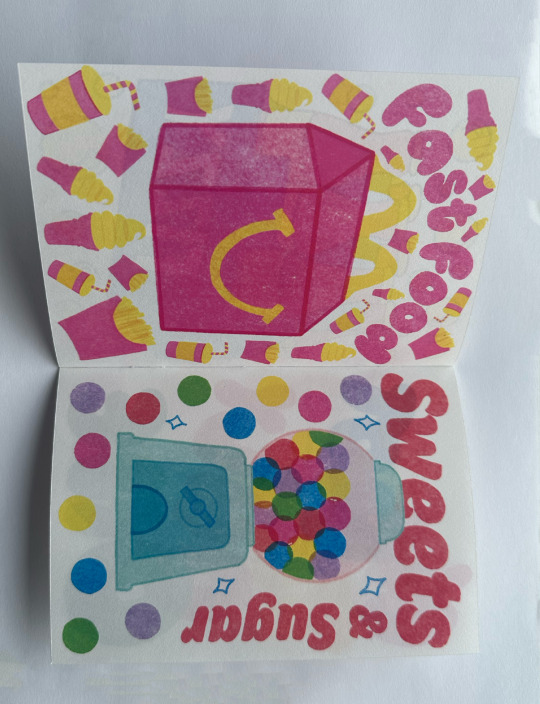
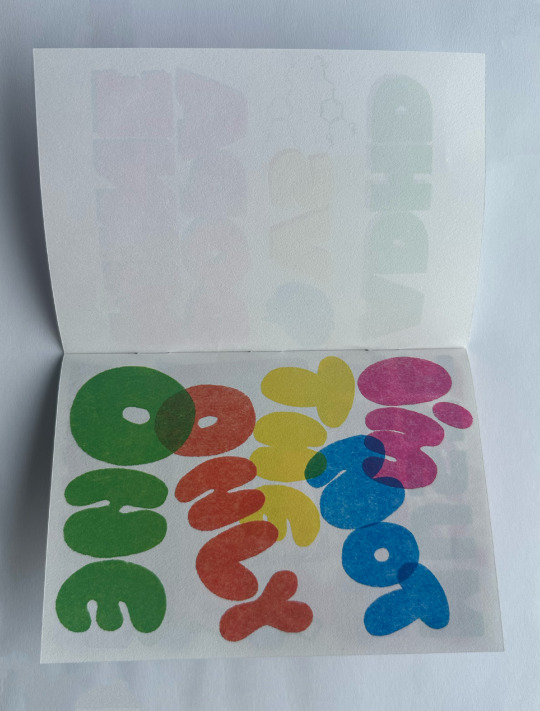
These images show my final outcome of specialist practice in respondence to the joy bringer brief from istd.
0 notes
Text
ISTD - Evaluation
Tuesday 12th December 2023 - Evaluation
This unit of work has given me the opportunity to further develop my skills within motion design, enhancing my work flow within Adobe After Effects and diving into kinetic typography as the outcome for my project. It has provided me with essential skills for the industry but also creating an outstanding piece of design for my portfolio, touching on a subject that I strongly believe in and has impacted me and my audience for the better. Once I am on the right path and feel confident in my ideas I am able to progress quite quickly, due to my dedication and great work ethic; this term provided me with some challenges which hindered my progress throughout the term but nevertheless I was able to push myself through and keep on track with the completion of this unit.
As a designer who is strengthening my skills within type design, I was apprehensive of how I would tackle type and motion design, and it took a while for me to understand a design style that would be suitable. Kinetic type has always interested me as a motion designer and this unit felt like the perfect opportunity to dive into it, being able to create expressive type that has a purpose, narrative and is engaging to the audience is a great skill to have for the industry. Throughout this unit I have considered my target audience and the way they would engage with my animation, knowing that my target audience, Gen Z, spend a lot of time of TikTok, creating a kinetic type animation that is face paced, hard-hitting and emotive would be best for the platform and would entice the best response. All my research from beginning to the end of this project has helped inform all my decisions, from theoretical research about modern day social media and the disastrous effects it has had on an impressionable young audience to the contextual research, looking at designers such as Morag Myerscough, who even though uses a bold, bright colour palette unlike myself her use of heavy weighted sans serif typefaces reflected back into my outcomes.
My project started very broad, picking the Big Data brief to challenge myself and push me out of my comfort zone, my research gave me a lot of avenues to go down. I was particularly drawn to how Big Data has a negative impact on our lives and the effects it has on society, and my main inspiration came from Fake News and the content we absorb. The biggest learning curve from this was having way too much information that I found it hard to narrow down onto one path, but once I finally made that link between Gen Z and the content they absorb through social media and how negatively this is effecting their body image and mental health, my project fell into place.
Reflecting on this unit I have realised that no matter the challenges of a brief, I will always push through and create a response that is engaging, unique and impactful. If I hadn't been faced with the personal challenges outside of university this term my time management would have been better, but taking that into consideration and factoring in the obstacles I have faced this term I actually believe my time management skills have been improved due to having to consider other external factors. Moving forward I will take the learning curve of this term through into my other units and also into industry, as it has taught me that as long as I keep pushing through, projects will fall into place and these outcomes will be just as, if not, more successful.
0 notes
Text
Final photos & binding - LO1 - LO3
While having discussions I wanted to find a more personal way of binding the book rather than staples because it felt less fitting. I looked at a few binding options that would work on a paginated draft which would help give it more volume than bindings such as japanese binding.

These are my final photos showcasing the cover, details and imagery. I am really happy how this turned out. i am glad that I decided to focus on just one outcome for this. Despite it definitely being possible to make multiple issue for developmental purposes focusing on one really helped me choose out design choices especially for image placement, space filling and text choices. If I were to do this again I would design and develop a set further from the deadline to make sure each could have an equal amount of attention. Even the front cover is much more consistent with the rest of the design.
To carry on considering the audience I definitely think a personal project like the could be turned into a distributed artbook. Whether that distribution is through public spaces like waiting rooms like hairdressers, public transport or other ways this could've turned into a mysterious but delicate push for generation z to look into. I hope for an audience this guidance using statistics and academic resources brings across the correct message of encouragement without being so negative that it becomes another brutal message ignored due to desensitisation.
Having the lighter side within with images and thoughts pulls it away from a less serious piece to something more suggestive.






I chose textured paper to present my book. Because it felt like the most personal/less editorial than glossy paper. Too with the stitching of my book made it feel 'handmade' again handing itself to the idea of a personal artist book for the audience to read/enjoy.
1 note
·
View note
Text
sp – further research (idea 2)
films:
reading an article explaining the red string of fate, it mentioned a couple films that included the red string theory in the plot. I found a way to watch them, so here I reviewed what I thought of how they used the red string theory:

sayonara (1957)
director: joshua logan
this film was also visually beautiful. it was about an interracial relationship between a white american man + an asian woman.
air force major lloyd gruver is reassigned to a japanese air base + is confronted with US racial prejudice against the japanese people.
letterboxd: air force major lloyd gruver is reassigned to a japanese air base, + is confronted with US racial prejudice against the japanese people. the issue is compounded because a number of the soldiers become romantically involved with japanese women, in defiance of US military policy. ordinarily an officer who is by-the-book, gruver must take a position when a buddy of his, an enlisted man joe kelly falls in love with a japanese woman katsumi + marries her. gruver risks his position by serving as best man at the wedding ceremony.
gruver meets hana-ogi, + at first she isn't interested, but he wins her over by playing hard to get. they eventually fall in love, but is found out by the military so they end up separating to not risk the tragedy their friends, kelly + katsumi, went through to be together. later gruver disregards the military and find hana-ogi again to be with her, which he go on to tell her that they shouldn't care + just be together because they're in love.
–
"at the end that the couples were united by the red string of destiny, and that everything that occurred before was nothing more than a plot through the route of string that would end up reuniting them." (how the source describes how the red string of fate was used in both films)
I thought it was important I explored a new method of research as I tend to look at articles + a few books. I've watched a few videos for research before but I think watching a film allows you to create your own thoughts first. you can then additionally find analysis videos from more knowledgable people on the subject to build your thoughts. this is what I did as I wanted a deeper understanding of the underlying metaphors + meanings within the films.
sources:
https://www.faena.com/aleph/the-legend-of-the-red-string-of-japan
Sayonara analysis video: https://youtu.be/1ihiB5o2YFs?si=zwWd7IsLD_g91p3C
https://letterboxd.com/film/sayonara/
1 note
·
View note